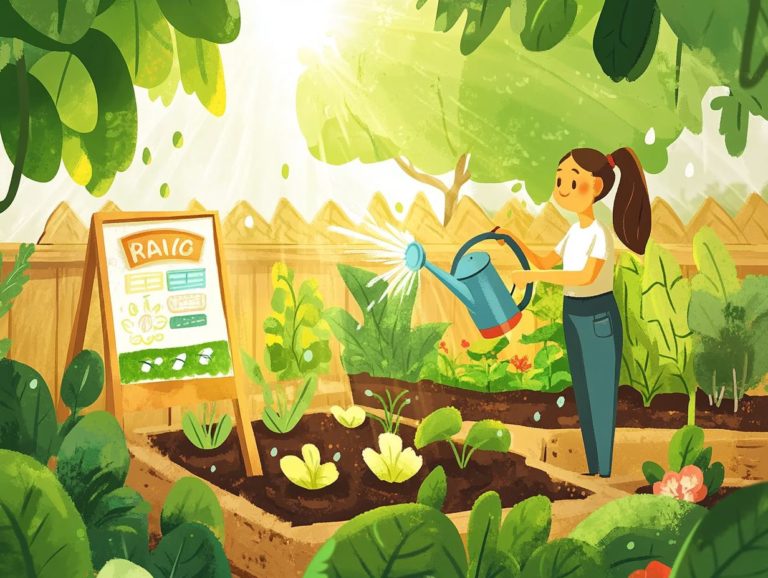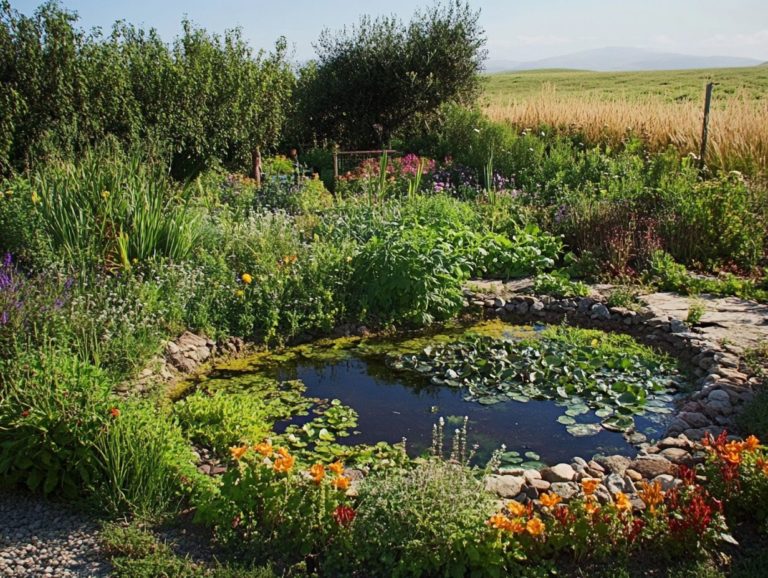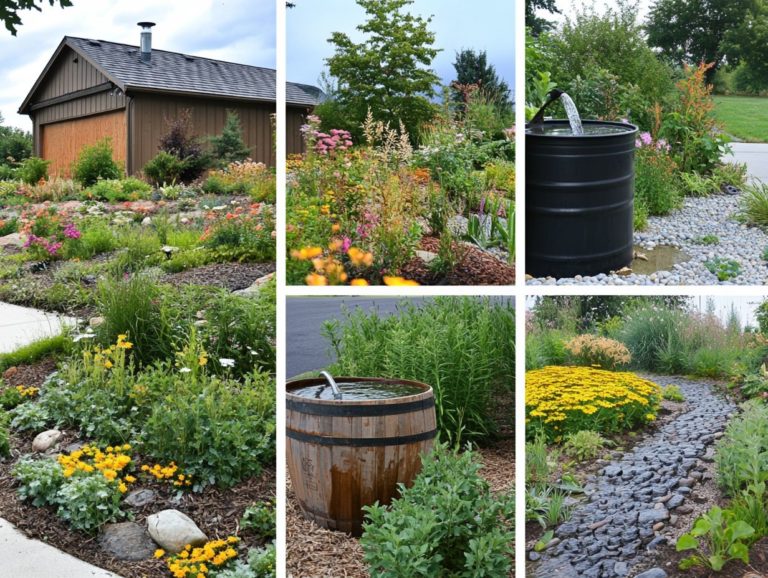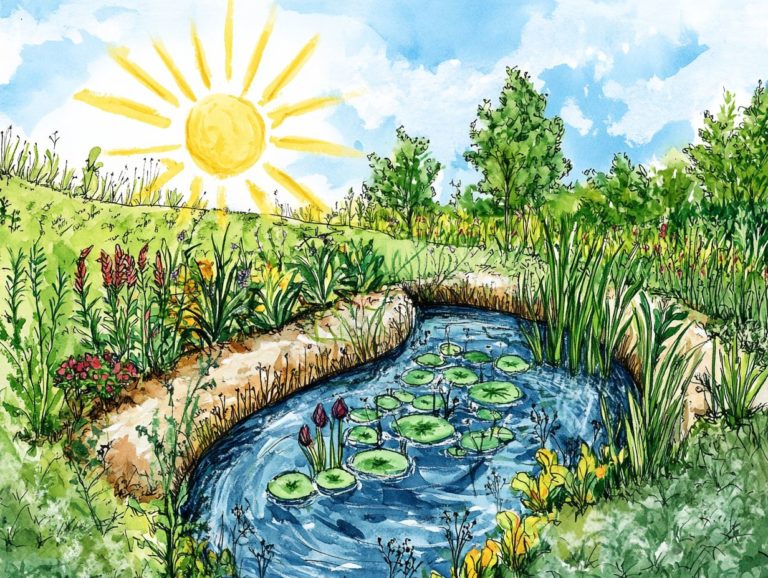The Science Behind Soil Moisture Retention
Soil moisture retention is essential for cultivating healthy ecosystems and ensuring successful agriculture.
By understanding how moisture influences plant growth and overall soil health, you can revolutionize your gardening and farming practices. This article explores the many factors that affect soil moisture retention, such as climate and soil composition, while introducing various methods for measuring moisture levels.
It also discusses practical strategies to enhance retention, emphasizes the important part of organic matter, and shares best practices to maximize water efficiency. Whether you’re an experienced gardener or a curious newcomer, this exploration will equip you with the insights needed to nurture flourishing plants and adopt sustainable practices.
Contents
- Key Takeaways:
- The Importance of Soil Moisture Retention
- Factors Affecting Soil Moisture Retention
- Methods for Measuring Soil Moisture
- Strategies for Improving Soil Moisture Retention
- The Role of Organic Matter in Soil Moisture Retention
- Frequently Asked Questions
- What does it mean for soil to hold moisture?
- Why is it important to understand the science behind soil moisture retention?
- How does soil type impact moisture retention?
- What factors contribute to good soil moisture retention?
- Can soil moisture retention be improved?
- What are the consequences of poor soil moisture retention?
Key Takeaways:
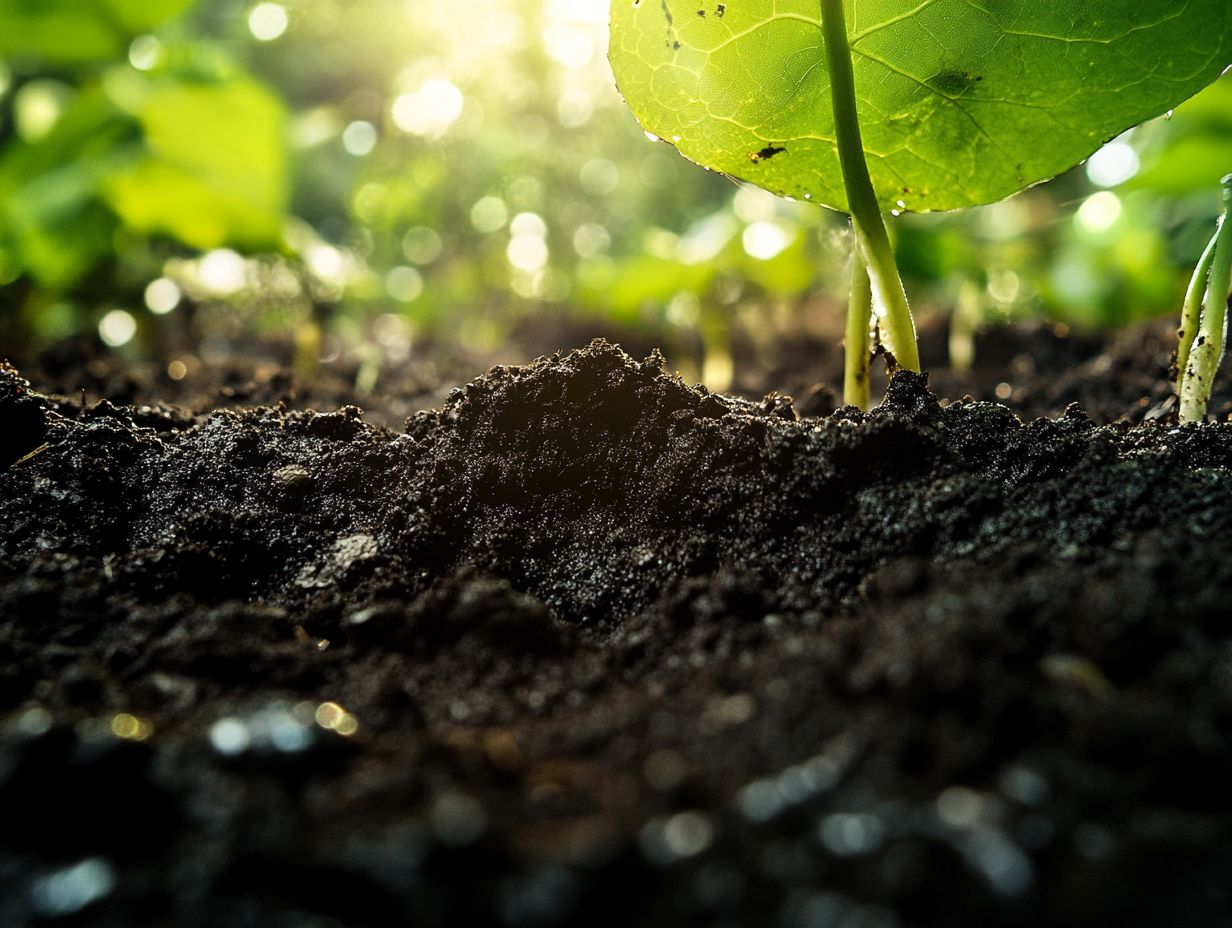
- Soil moisture retention is crucial for plant growth and health, as it affects the availability of water and nutrients.
- Climate and soil composition play a significant role in soil moisture retention, and different types of soil can retain moisture differently.
- Measuring soil moisture is essential for understanding and managing it effectively; using conservation practices and organic matter can help improve soil moisture retention.
The Importance of Soil Moisture Retention
Soil moisture retention plays an important part in agricultural productivity, significantly affecting the water reserves within the soil. This moisture is essential for facilitating plant growth and ensuring that crops receive the hydration they need to flourish.
By grasping how soil moisture interacts with different elements like soil texture and organic matter content you can refine your irrigation management practices. Understanding this can supercharge your crop yield and save precious water!
Effects on Plant Growth and Health
The impact of soil moisture on plant growth and health is significant. Adequate water content is crucial for nutrient uptake and overall crop yield, especially in the face of challenges like drought stress.
By maintaining optimal moisture levels in the root zone, you directly influence the vigor and resilience of your plants. When soil moisture falls below necessary thresholds, your crops may suffer from drought stress, resulting in stunted growth, reduced photosynthesis, and lower fruit or seed production.
Certain soil characteristics such as texture and structure are vital in determining moisture retention. Sandy soils drain quickly, leaving your crops vulnerable during dry spells, while clay-rich soils might retain water but can become compacted, hindering root expansion.
Understanding this delicate balance is essential for enhancing agricultural productivity and ensuring sustainable farming practices.
Factors Affecting Soil Moisture Retention
Several factors significantly impact soil moisture retention, including soil texture, the contrasting compositions of fine and sandy soils, and the presence of organic matter. Each of these elements plays a crucial role in shaping the overall soil profile and its capacity to retain water effectively.
Understanding these influences can enhance your ability to manage soil health and optimize water retention.
Climate and Soil Composition
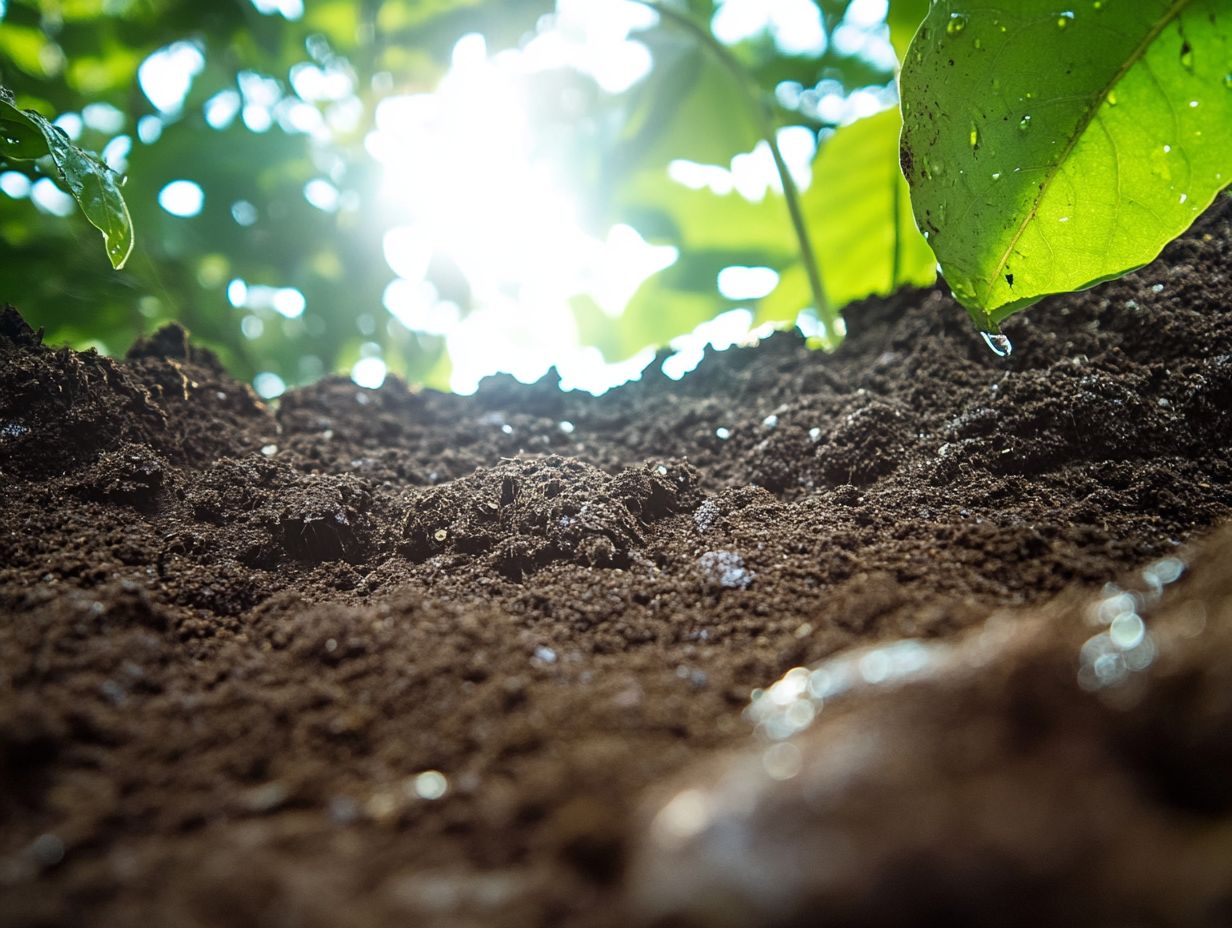
Climate plays an important part in shaping soil moisture levels, as the varying patterns of rainfall and fluctuations in temperature directly influence the availability of water in the soil.
These variations can create notable differences in soil composition, impacting everything from nutrient cycling which refers to the movement and exchange of nutrients in the soil to the growth of plants. To deepen your understanding of these dynamics, researchers frequently employ advanced tools like rainfall simulators, which mimic various rainfall scenarios to observe how moisture retention shifts under different climatic conditions.
Such studies unveil crucial insights into how extended periods of drought or excessive rainfall can transform soil structure and health. By examining soil characteristics before and after these simulated rainfall events, you can clearly see the significant influence climate has on sustainable land management and agricultural practices.
Ready to boost your garden s health? Let s dive into how you can improve soil moisture retention!
Types of Soil Moisture
Understanding the various types of soil moisture, such as field capacity and the permanent wilting point, is essential for mastering soil and irrigation management.
These concepts enable you to gauge the available water for your crops. This influences your irrigation schedules and planting decisions.
When soil moisture dips too low, your plants can experience stress. This negatively impacts yield.
Conversely, excessive moisture can lead to root rot and other diseases.
Soil water sensors are invaluable in modern agriculture. They offer real-time measurements of the amount of water in the soil.
By accurately assessing soil moisture levels, these sensors allow you to implement customized soil management strategies. This optimizes water usage and promotes sustainable farming practices. Using this data not only boosts your crop growth but also saves valuable water resources!
Methods for Measuring Soil Moisture
Accurate methods for measuring soil moisture are crucial for effective irrigation management. By utilizing advanced tools like moisture sensors, you gain access to near-real-time data on soil water levels.
This data allows you to optimize your agricultural practices with precision.
Tools and Techniques
You can utilize various tools and techniques to measure soil moisture, such as moisture sensors and advanced irrigation systems. These tools help you maximize water retention and boost crop yield.
One popular method is using soil moisture sensors, which provide real-time data on moisture levels. This information enables you to make informed decisions about when and how much to irrigate.
Tensiometers are devices that measure how tightly water is held in the soil. Their ability to generate a water retention curve offers insights into how your soil retains moisture under different conditions.
You can enhance water efficiency by integrating these technologies into your irrigation practices. This paves the way for sustainable farming and healthier crops.
Strategies for Improving Soil Moisture Retention
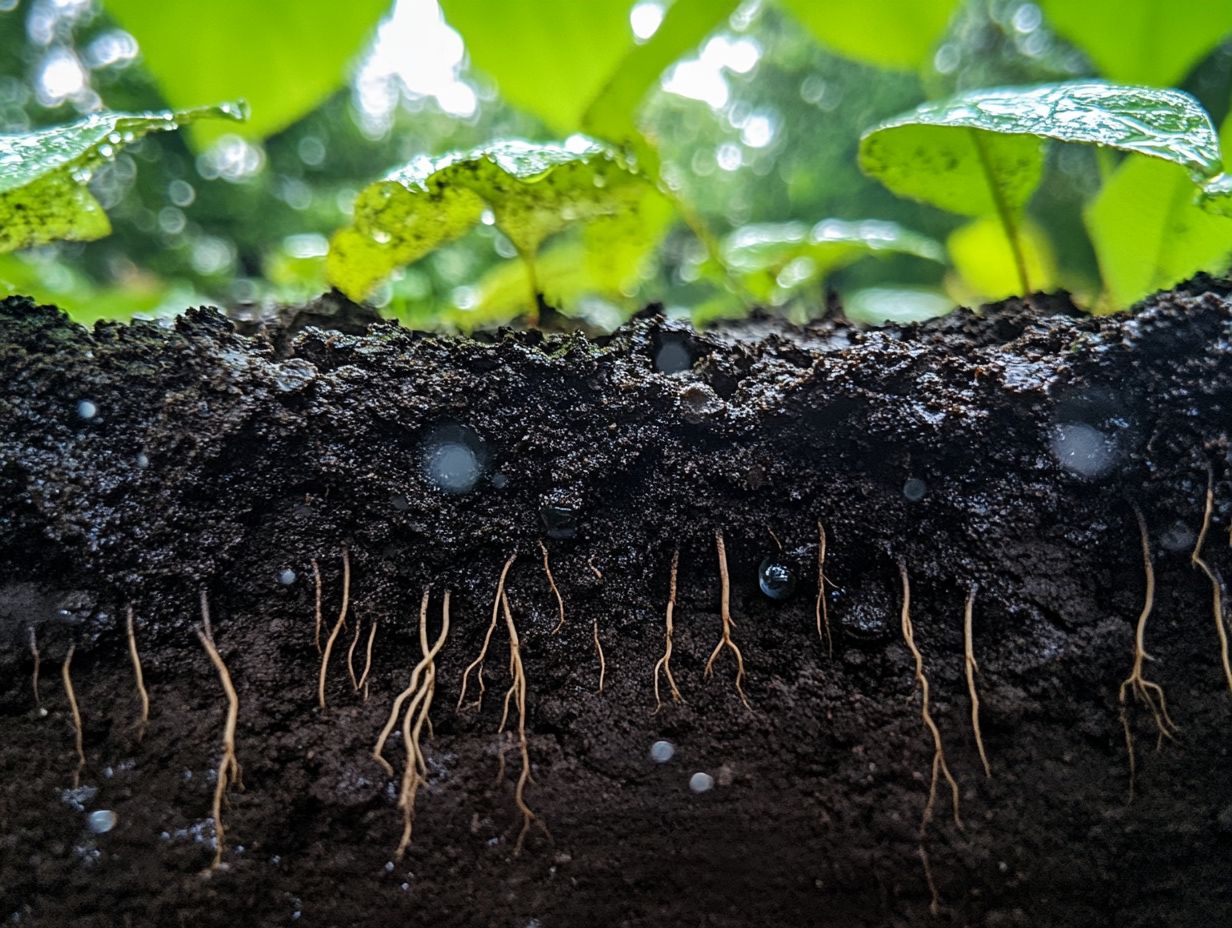
Implementing effective strategies to improve soil moisture retention is crucial for sustainable agriculture. By focusing on conservation practices that enhance soil structure and increase organic matter, you can significantly boost the soil’s water-holding capacity.
This thoughtful approach not only benefits your crops but also fosters a healthier ecosystem.
Conservation Practices and Irrigation
Conservation practices paired with effective irrigation management are essential for optimizing soil moisture levels. This ensures water availability for your crop production.
Start using cover cropping today to boost organic matter in your soil while minimizing tillage to maintain its structure.
Implementing drip irrigation systems is especially advantageous. It delivers water directly to plant roots, significantly reducing evaporation and runoff.
Additionally, incorporating rainwater harvesting systems and scheduling your irrigation based on soil moisture data can greatly enhance the efficiency of your water resources.
By integrating these strategies, you improve soil moisture retention. You also contribute to sustainable agricultural practices that support long-term ecosystem health and resilience against climate variability.
The Role of Organic Matter in Soil Moisture Retention
Organic matter is essential for your soil s ability to retain moisture. It enhances soil structure, significantly improving both water-holding capacity and nutrient retention.
These factors are crucial for fostering healthy plant growth and boosting agricultural productivity.
Benefits and Best Practices
Adding organic matter to your soil can greatly improve moisture retention. This helps boost crop production for farmers like you.
This enhancement is particularly vital in regions grappling with erratic rainfall patterns. A soil s ability to hold water can be the fine line between a flourishing harvest and a disappointing failure.
By adopting practices such as composting, cover cropping, and mulching, you can effectively boost your soil’s organic content. These strategies enrich the tiny organisms in the soil and contribute to building a more resilient agricultural landscape.
Well-managed soil enriched with organic matter helps retain moisture and improves nutrient availability. This can lead to impressive yields and thriving crops that make your hard work truly rewarding!
Frequently Asked Questions
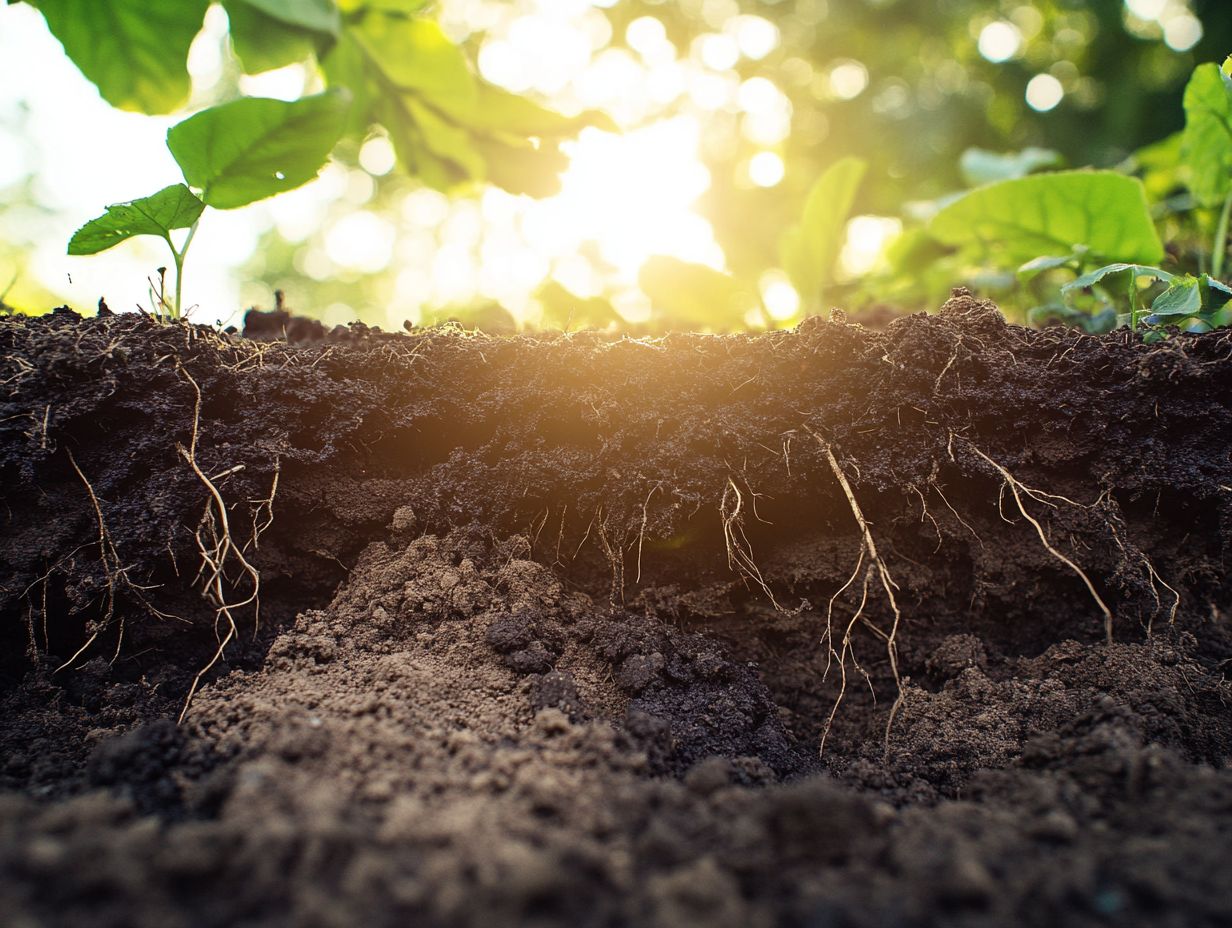
What does it mean for soil to hold moisture?
Soil moisture retention refers to the ability of soil to hold onto water and prevent it from draining too quickly. This ability is influenced by factors like soil texture, organic matter, and soil particles.
Why is it important to understand the science behind soil moisture retention?
Understanding the science behind soil moisture retention helps farmers make informed decisions about irrigation management, plant health, and soil management. This leads to improved crop yields.
How does soil type impact moisture retention?
Soil type, including sandy and fine soils, greatly affects moisture retention. Different soils have varying amounts of pore space and organic matter, which influences their water-holding capacity.
What factors contribute to good soil moisture retention?
Good soil moisture retention is influenced by factors such as soil texture, organic matter content, soil structure, and the infiltration rate related to climate conditions.
Can soil moisture retention be improved?
Yes! You can improve soil moisture retention by adding organic matter, using cover crops, and implementing water conservation techniques. These practices enhance the soil profile and water reserves.
What are the consequences of poor soil moisture retention?
Poor soil moisture retention can lead to waterlogging, erosion, nutrient leaching, and reduced plant growth. These issues can negatively impact agricultural producers and the environment, especially under drought conditions.


